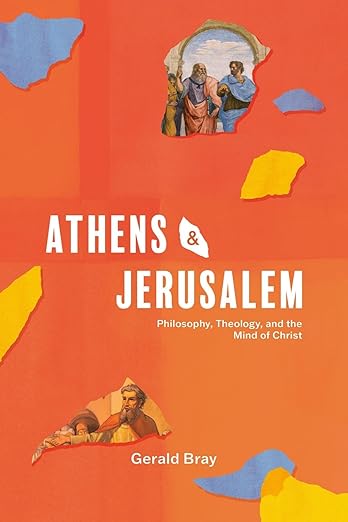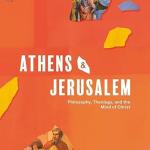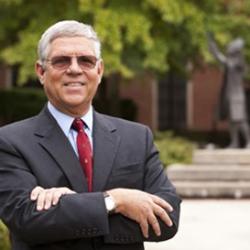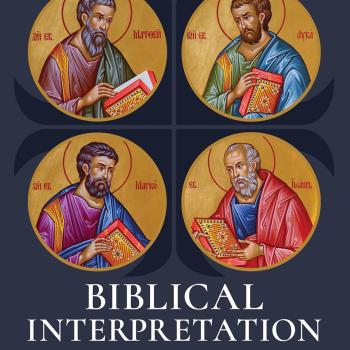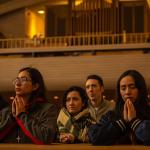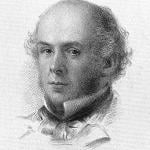The Latin phrase ‘ars longa, vita brevis’– art is long but life is short is a maxim that especially came true during the Renaissance when artists such as Raphael, Michelangelo, and Da Vinci, all of whom professed to be Christians, began to offer art that emphasized the full humanity of their subjects (cf. e.g. Michelangelo’s David). The Renaissance had arrived and with it various Greek scholars who had moved from a dying Byzantium to Rome and elsewhere in Italy. And so the Greek works of Plato became more accessible to Latin speakers, through translation. It needs to be understood that Latin had long since been the official language of the church, which led to the peculiar circumstance of the Bible just being translated and studied in Latin in the West. Even Martin Luther only learned Greek in order to translate the NT into Latin! But the tide was about to turn with the arrival of Greek scholars in Italy, and the arise of the ad’ fontes’ movement— lets get back to the original languages, including Hebrew and Greek (see my Sola Scriptura about all this).
The art went so far as to portray pagans and Christians together, for instance in the ceiling of the Sistine Chapel, where you find the OT prophets juxtaposed with the Sibyls, or consider Raphael’s famous painting of the school of Athens, where Plato and Aristotle are central, but we get various other Greek philosopher and even Athena and Apollo are portrayed overseeing the whole scene. And this painting was commissioned by the Pope, and still today hangs in the Vatican. The recovery of the ancient philosophies, and the permission to study their thought in Latin, led to the rise of the study of the Greek and Latin classics in schools across Europe, in addition to theology. One notices the fixation on the beauty of the human form, both male and female, and in general on beauty of whatever sort. For some, it was already becoming true that ‘beauty is truth…’ if not the reverse of that maxim. As Bray notes, by contrast, the NT says nothing about the appearance of Jesus, or the Twelve— nothing. Indeed, early commentators were apt to apply Isa. 53.2 to Jesus ‘he had no form or comeliness that that we should look at him, no beauty that we should desire him’. Beauty of character and personality was not what those Renaissance artists were portraying. Christianity was not about a striving after beauty, or even after God, but rather obedience to God’s revelation, as Bray says. The main thing humanism of that period could not fully come to grips with was sin, sin and evil.
What happened in 1516 when Erasmus published his Greek NT, is that gradually it produced an enormous countering reaction. There is some irony in all this because Erasmus was using some late Greek manuscripts to produce his Greek NT, whereas Jerome writing 1000 years earlier had access to far more ancient manuscripts of both the Hebrew and the Greek portions of the Bible and so at various points his Latin translation was closer to the original than Erasmus’ Greek text, but on the other hand the latter was also often closer to the original than the Vulgate. It was a complex situation. But the Roman church was forced to declare that the Vulgate was the correct version of the Bible and the only one to be used to determine correct doctrine. As Bray laments “It was an absurd decision but it put an effective end to creative Biblical research in the Roman Catholic church, which did not fully recover for four centuries.” (p. 148), In fact it was only in my lifetime when Vatican 2 happened that real recovery began. In the 50s, my wife was still attending Mass, held only in Latin, with Bible readings in Latin as well.
There is no need to rehearse the Reformation with its changes, which Bray does good justice to, since I’ve already talked at length about that in my essay on the development of the Bible, and in Sola Scriptura. As science was beginning to come to the fore, Aristoteleanism was increasingly shown to have its weaknesses, not the least of which was its inability to explain motion– if the Prime Mover could move other things, how could he not also be involved in motion. Why did not the movement of the heavenly bodies always follow a strict circular path? When Copernicus and Kepler, and Galileo began to change the earth centered view of the universe and noted the elliptical orbits of the planets (unlike Aristotle’s perfect circular orbits), and it was Galileo in his 1610 publication Starry Messenger, that put the nail in the Ptolemaic and Aristotelean coffin in regard the nature of the universe and the motion of the heavenly bodies. But it was only in 1623 that Galileo published his tour de force demolition of Aristotle and Ptolemy’s vision of the universe and its movements in his Dialogue concerning the Two Chief World Systems. Galileo was placed under house arrest, and his book could not be published in Italian, but fortunately it was secretly shipped out to Holland where it was printed in Holland. The cat had been let out of the bag, and the Reformers admired Galileo for resisting the pressure of the pope on this issue.
When the Catholic Church was shown to be wrong in upholding Aristotle’s and Ptolemy’s view of the universe, this opened to the door to the questioning of the church on other issues, and in fact opened the door in due course to Unitarianism a sort of deism. It was rather like opening Pandora’s box, and it led to various Presbyterian churches in Europe becoming Unitarian, and then in America too, including Harvard Divinity school, which had originally been founded to train evangelical ministers. In 1833, the state of Massachusetts disentangled itself from endorsing a state religion (in this case Congregationalism, and then Unitarianism). What happened over time, was the gradual disaffiliation of governments from state religion in most regards, leading to the extreme idea of the separation of church and state, which in turn ended up meaning the separation of any sort of religion and the state. This was seen in some places as a bridge too far, but the result was in most of the West freedom of religion (which sometimes meant freedom from religion). Today we see reactions to this for instance, in India, which was supposed to be a modern democracy with freedom of religion but increasingly had a government that supports and promotes Hinduism.
It is hard to give an exact date when the religious and philosophical attitude in the West changed away from a specifically more Christian (and Aristotelean) orientation, but many scholars say it happened around 1700— before the American and French Revolutions. This change has sometimes been called the Enlightenment. “In the space of one generation, the European mind went from one in which religious questions were of fundamental importance and shaped the framework of discussion for everything else to one in which religion was shunted to the sidelines, to be replaced by the cult of human reason and science (however broadly that might be defined).” (p. 172).
The remained of this book chronicles the decline of Christian influence in almost all public spheres including in the realm of science, and the response to that decline in various ways. Gradually the light dawned on Christians that the Biblical truth cannot be forced on people, only witness and persuasion can achieve the desired end. Freedom of discussion, far from endangering the truth, makes embracing the Biblical witness even more possible and plausible, but the approach has to be ‘faith seeking understanding’. It also requires a recognition that all truth of whatever sort is God’s truth, and if it is indeed truth, it will not contradict, but rather comport with Biblical truth. But this in turn requires understanding what the actual subject matter of the Bible is and is not. The Bible is not a scientific textbook foisted on a pre-scientific group of people. It does not teach cosmology, geology, chemistry and so many other sciences. It’s subject matter is theology,ethics, salvation history and spiritual formation. We do not turn to the Bible to learn the shape or age of the earth, nor how to repair our cars, and so much more. Amen and Amen.
In a final post, I will deal with Brays conclusions, but for now I will just say, Bray’s book is the best survey I know of, of the troubled history of the development of theology and philosophy and deserves to be on the shelf of every thinking Christian who cares about these matters.


